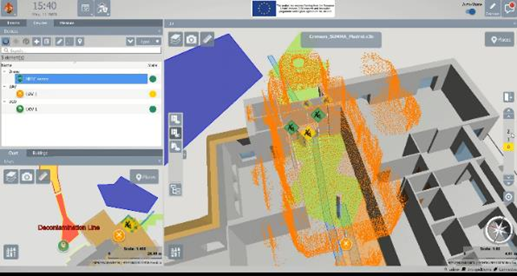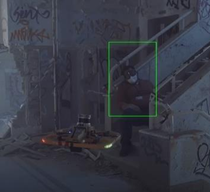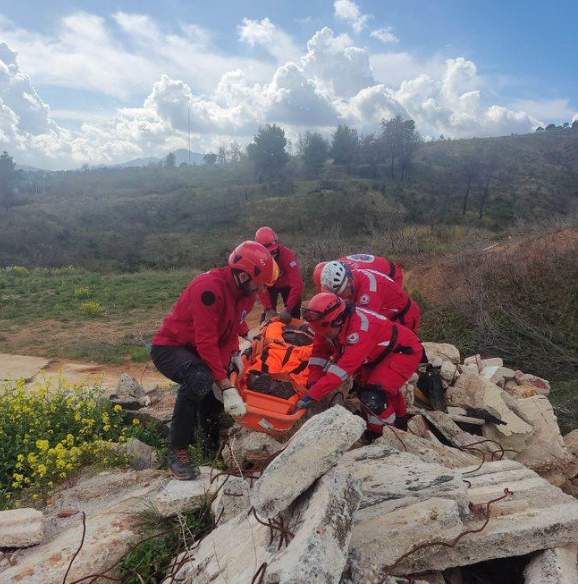The integration of Artificial Intelligence (AI) into disaster response technologies is transforming how first responders and autonomous systems operate in complex, high-stakes environments. In the context of the CARMA project, AI plays a pivotal role in enhancing orchestration, perception, and decision-making processes of semi-autonomous and autonomous Unmanned Ground Vehicles (UGVs), enabling them to work seamlessly alongside humans in disaster scenarios.
Orchestration involves coordinating multiple UGVs and human responders to execute complex tasks efficiently. AI-driven algorithms facilitate the dynamic management of these systems, ensuring optimal task allocation, resource distribution, and real-time adaptation to changing conditions. For instance, AI enables the platform to prioritize missions based on criticality, orchestrate the movement of multiple robots, and synchronize their actions in a cohesive manner. This level of autonomous orchestration significantly reduces response times and improves operational effectiveness.

Perception is another critical aspect where AI demonstrates its strength, particularly through advanced sensor integration and environment analysis. CARMA leverages cutting-edge 3D radar-based mapping combined with AI-powered perception algorithms to create detailed, real-time environmental models. This capability is especially vital in low-visibility conditions, such as smoke, debris, or darkness, where traditional sensors might falter. AI enhances the robots’ ability to detect victims, identify threats, and recognize environmental hazards, thus providing responders with vital situational awareness.

Decision-making is elevated through AI techniques like Generative Adversarial Networks (GANs), Natural Language Processing (NLP), and machine learning models. These tools enable UGVs to perform complex path planning, adapt to unforeseen obstacles, and collaborate effectively with human teams. GANs facilitate collaborative tasks by generating realistic scenarios for training or operational planning, while NLP allows natural interaction between humans and robots, making communication more intuitive. Additionally, AI-driven decision algorithms help prioritize actions, assess risks, and optimize mission outcomes, ultimately leading to faster, more accurate responses in disaster situations.

Human-AI symbiosis is a fundamental component of the CARMA platform, emphasizing a seamless, intuitive collaboration between humans and autonomous systems. By leveraging NLP and eXtended Reality technologies, the platform fosters natural, real-time interactions, enabling responders to give commands or receive updates effortlessly. This symbiosis ensures that AI acts as an intelligent partner rather than a mere tool, augmenting human capabilities with predictive analytics, situational insights, and adaptive behaviours. Importantly, this collaborative approach allows for missions to be executed jointly by both robots and humans, maximizing efficiency and safety in disaster scenarios. Such teamwork enables responders and autonomous systems to share responsibilities dynamically, with robots handling hazardous or repetitive tasks while humans focus on strategic decision-making and complex interventions. This collaborative execution not only enhances operational effectiveness but also builds trust and acceptance among users, which is crucial in high-pressure disaster scenarios.
In summary, AI’s integration into the CARMA platform exemplifies how intelligent systems can orchestrate complex operations, enhance perception in challenging environments, and support autonomous decision-making. This synergy of AI technologies paves the way for more resilient, efficient, and human-centric disaster response solutions, promising a significant leap forward in crisis management capabilities.
